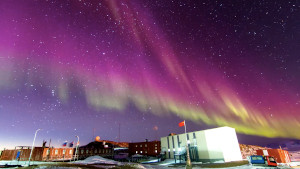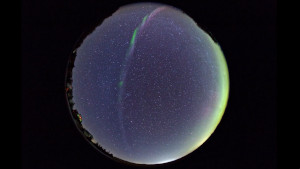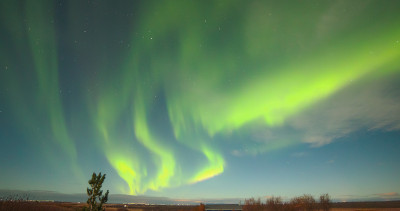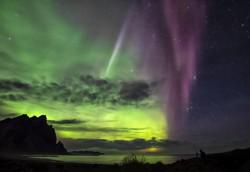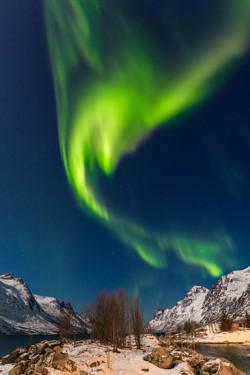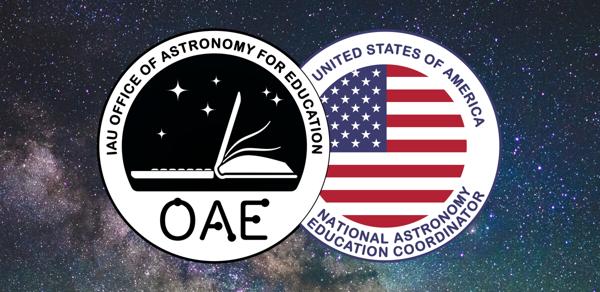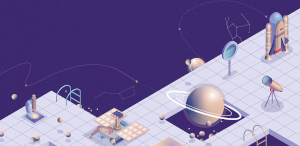Loading...
Related Media
Till the End of the World, by Hang Li, China
Caption: First place in the 2021 IAU OAE Astrophotography Contest, category Aurorae (time-lapses).
Aurorae are often called "Northern Lights" in Europe or North America but here we see that they also exist at the extreme south of our planet. Taken at Zhongshan Station, Antarctica, this time-lapse (speeded up) video shows how some bands of Aurora can remain stable over longer times while other features appear to "dance". See how many different patterns of swirls and waves you can spot in the video.
Credit: Hang Li/IAU OAE
Credit: Hang Li/IAU OAE
License: CC-BY-4.0 Creative Commons نَسب المُصنَّف 4.0 دولي (CC BY 4.0) icons
Icelandic Rivers of Light, by Sergio Díaz Ruiz, Spain
Caption: Second place in the 2021 IAU OAE Astrophotography Contest, category Aurorae (time-lapses)
This video shows how aurorae evolve slowly over timescales of a few minutes. Note the clouds being illuminated from behind in the last two shots. Aurorae are caused by interactions between the charged particles blown out in huge explosions from the Sun and the Earth's magnetic field. The changes over time are caused by huge waves of particles pushing the Earth's magnetic field into strange shapes before it snaps back into place.
Credit: Sergio Díaz Ruiz/IAU OAE
Credit: Sergio Díaz Ruiz/IAU OAE
License: CC-BY-4.0 Creative Commons نَسب المُصنَّف 4.0 دولي (CC BY 4.0) icons
Multicolored aurora in Iceland, by Marco Migliardi on behalf of Associazione Astronomica Cortina, Italy
Caption: First place in the 2021 IAU OAE Astrophotography Contest, category Aurorae (still images)
Aurorae are the result of ionisation and excitation processes in Earth's upper atmosphere, caused by charged particles from the solar wind or from coronal mass ejections. The different colours in an aurora display indicate the species of atmospheric atoms and molecules involved. The most common colour is a bright green, which, together with deep red, originates from atomic oxygen. Blue, purple and pink hues are much rarer and originate from molecular nitrogen. The reflection of the aurora in the water indicates the brightness of intense aurorae at higher latitudes.
Credit: Marco Migliardi on behalf of Associazione Astronomica Cortina/IAU OAE.
Credit: Marco Migliardi on behalf of Associazione Astronomica Cortina/IAU OAE.
License: CC-BY-4.0 Creative Commons نَسب المُصنَّف 4.0 دولي (CC BY 4.0) icons
